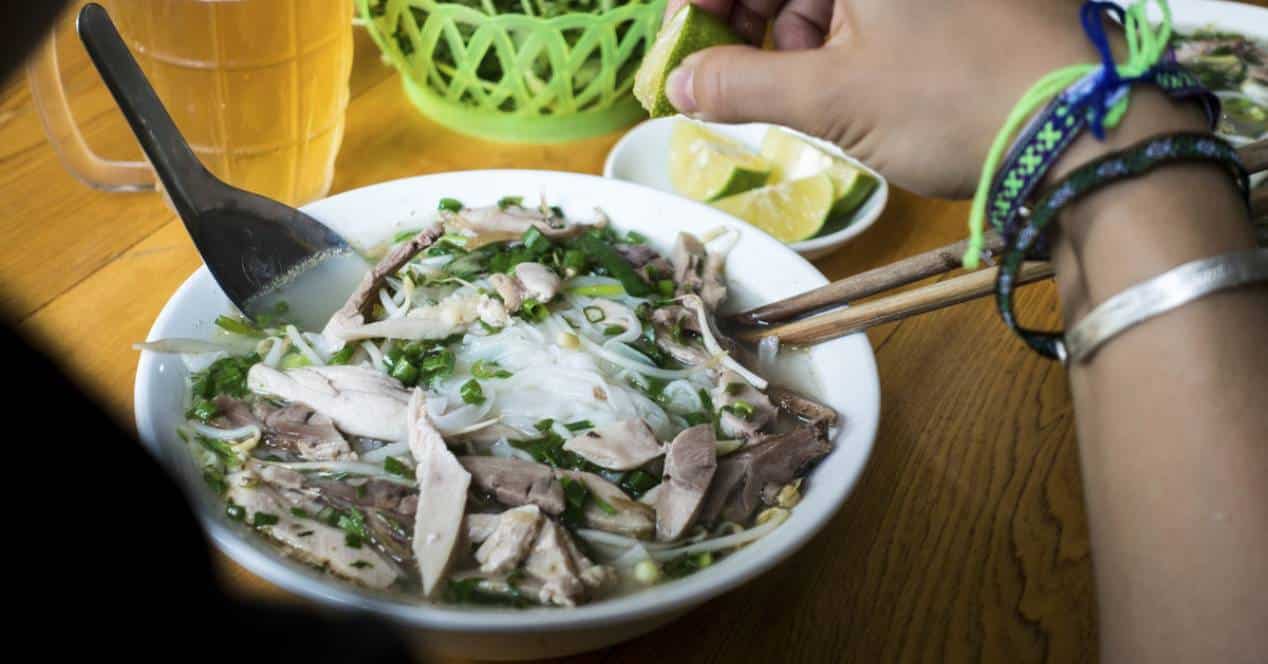
Sometimes nothing hits the spot like a nice steaming bowl of noodles after your workout, but ramen isn't the only trendy option anymore. These days, everyone seems to be eating a Vietnamese soup, called Pho (pronounced "fuh"). However, it is not yet clear how nutritious the dish is or how many calories.
Pho originated hundreds of years ago in Vietnam and began as a humble street food. It is traditionally an aromatic beef broth-based soup served with rice noodles, chunks of meat and lots of fresh herbs. Logically, the quality of this dish starts with good quality ingredients.
Nutritional value and caloric content
Actually, it depends.
Pho has been enjoyed by Vietnamese families for centuries. Each family has a different recipe and the way they serve it varies as well. It was not created to be a diet dish or to fit into a calorie count.
Given that, the calories in pho vary depending on the size of the bowl you eat, how many noodles you add, and what protein you use, like a fattier cut of beef or shrimp. Plus, whether you're cooking Pho at home, ordering it at a restaurant, or eating a pre-packaged version also plays a role in how many calories you'll consume.
This is what you get in a cup of homemade Vietnamese beef soup:
- Calories: 215%
- Fats: 5,47 g
- Carbohydrates: 25.2 g
- Fiber: 1,22 g
- Protein: 15 g
- Sugar: 1,93 g
- Sodium: 1,200 mg.
And in a prepackaged vegetable serving:
- Calories: 210%
- Fats: 1,5 g
- Carbohydrates: 45 g
- Fiber: 2 g
- Protein: 4 g
- Sugar: 2 g
- Sodium: 1,240 mg.
Obviously, you're likely to get more than one cup if you go to a restaurant. You should also keep in mind that many recipes are also high in sodium and contain some added sugar.
https://www.instagram.com/p/B0jihheAUKN/
Can it be considered healthy?
In theory, it's a great dish because it has all the components you need: carbohydrates, protein, and healthy fats. In addition to protein, beef also provides B vitamins, zinc, and iron. Depending on the herbs and vegetables you add to your bowl, you'll get some fiber and other vitamins.
The seasonings you add to your bowl can also enhance your benefits. Spices are sources of photochemical important that can be anti-inflammatory, increase metabolism and much more. Even rice noodles offer some nutrition, like folic acid, B vitamins, potassium, magnesium and selenium.
Also, things are just satisfactory. Robust flavor, temperature, and texture contribute to a full range of sensory appeal. Basically, one serving has everything you need to feel super nourished and satisfied.
Are there disadvantages to consuming Pho?
The biggest concern, particularly in restaurants or prepackaged products, is the sodium. In fact, some restaurant-sized servings can include nearly a day's recommended sodium intake.
But that doesn't mean noodle soup is off limits. Just consider sodium levels in the context of your overall diet. For people who are salt sensitive or have been told to reduce their sodium intake to help manage a health condition, they should pay attention to the amount just as they would any restaurant meal.
Another thing to keep in mind: the serving sizes, which are often too large.
What differences exist with ramen?
Although both pho and ramen are popular noodle-based soups, there are some key differences between the two comfort foods.
The Pho has a clear broth of flavor complete traditionally made with spices, meat bones and aromatics; while ramen, on the other hand, is traditionally made with pork broth. Also, Vietnamese soup is typically richer because it includes meat, dried fish, and seaweed.
However, as both ramen and pho become more popular and widely available, chicken broth and vegetarian versions are becoming more common.
The other main difference: the noodles. Pho features rice noodles, while ramen uses wheat noodles, which can be a bit thicker and heavier.
How to make your bowl of pho as healthy as possible?
A full plate of healthy protein, carbs, and fat is perfect, which is why this soup is, too. However, you can totally adjust it to suit your tastes and dietary needs.
For example, you can change the noodles or protein source to accommodate any food allergies or dietary restrictions. Don't you eat red meat? Opt for broth made with chicken bones and garnish with shredded chicken. Are you allergic to fish? Add a dash of soy sauce instead of the traditional fish sauce.
Finally, if you're focused on eating more plant-based, opt for tofu, tempeh, or even beans (like shelled edamame or chickpeas) for your protein serving, and add extra veggies, like broccoli, peas, carrots, and onions to your meal. mug.